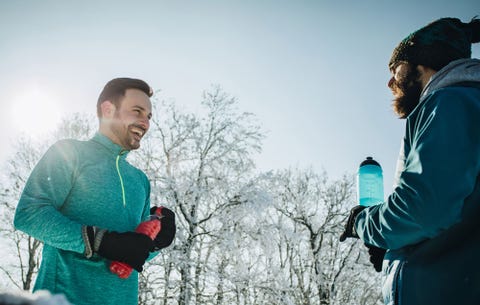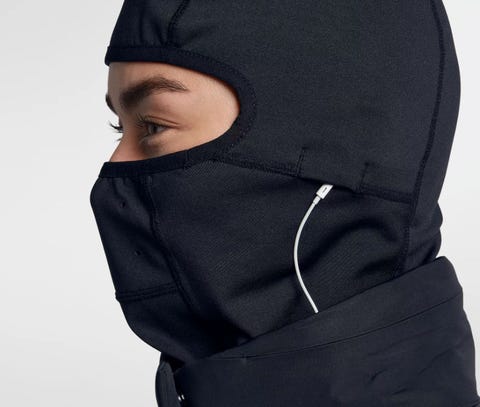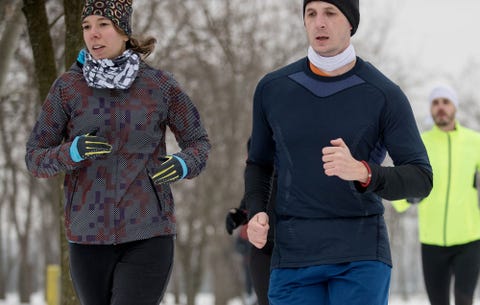Why Does It Feel Like My Lungs Are Burning When I Run in Cold Weather?
Dry air and arctic temps can make breathing a struggle. This Boston run coach shares how to cope.

Some of my favorite runs have been during the dead of winter in my hometown, guided by Boston’s glittering city lights. I love the way the cool breeze feels on my face, how the crisp air makes my skin tingle, and how the chill gets me moving just to warm up. I like the sort of thinking I can do on quiet, empty streets. Plus, there’s nothing quite like finishing a hard run in the cold, walking into a warm apartment, and reaching for my favorite hot chocolate.
But the struggle to catch your breath when you get out there is real. Every year, I hear about coughing fits and burning throats from runners trying to survive their first winter and vets who’ve run through 20 seasons of snow. Unless you live in a tropical climate, you too may have found yourself on the side of a road, trying to catch your breath, wondering if it’s even safe to be out at all.
Here’s the good news: Despite the discomfort you may feel, running in the cold isn’t generally dangerous for most people.* To figure out how to beat the burn, here’s a breakdown of what’s happening, why you feel your lungs are burning the cold weather, and my expert tips on how to deal.
*Editor's note: Brillaud’s advice below isn’t medical as she is not a doctor, and all running should be cleared with your doctor first, especially if you have a pre-existing condition. There are certain extreme temperatures and conditions in which running can be dangerous. It is best to work with your doctor or a pulmonary specialist to map out the best plan for returning to exercise.

5 Tips to Help You Prioritize Running

Treadmill Incline Workouts for Marathon Training

Heat Therapy Benefits Runners' Recovery

How Well Does AI Know Running?












